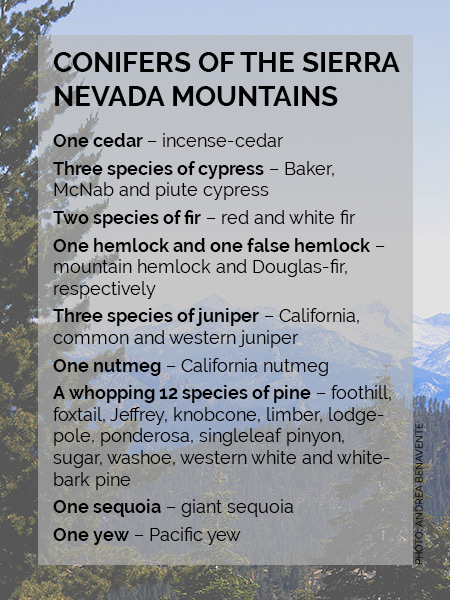By Justin Hynicka, Manager of Forest Conservation
The Sierra Nevada Mountains, which rise abruptly from California’s populous Central Valley and cover more than 20,000 square miles, contain one of the most biodiverse temperate conifer forests on Earth. Twenty-six species of conifer trees are native to this region and are distributed in broad elevation zones according to the climatic conditions under which they evolved and adapted.

Maybe we shouldn’t be surprised with all these players, but these forests are suffering from a complicated relationship with a single source: too much love. Like that succulent plant you bought and killed because you watered it too much despite careful instructions from the vendor — only on a vastly larger scale and with more devastating consequences — we’ve safeguarded forests in the Sierra Nevada Mountains too much by allowing too little wildfire.
Low severity wildfires were once common here, re-occurring every 12 to 20 years. Yet, because of past fire suppression polices aimed at safeguarding economic forest resources, less than one percent of forest land has experienced low severity fire over the last 100 years. While more trees grew in the short term, the long-term consequences of this management approach erupted in the early 2000s with more frequent occurrences of highly damaging wildfires that have left portions of these forests without a seed source for miles and turned back the clock on forest development by decades, if not centuries. These conditions threaten the myriad of wildlife that depend on mature forest habitat including the pacific fisher and northern goshawk.
About this same time, American Forests’ tree planting partnerships shifted toward western national forests and other public lands in an effort to address the pressing need for large-scale wildfire restoration through tree planting. Our work in the Sierra Nevada Mountains began in 2001 and regionally we have planted more than 1.6 million trees across 8,000 acres. In 2017, we are partnering with the Eldorado National Forest to initiate restoration across 17,000 acres that were severely burned during the King Fire. One of the most ecologically devastating fires in California history, the King Fire consumed a total of 97,000 acres of public and private land.
While tree planting will always be regionally important, it is clearly time for a break-up with current management policies. There is an estimated 2.5 million-acre backlog of wildfire treatments on federal lands alone in the Sierra Nevada Mountains, with fuel reductions treating roughly 20 percent of the annual historic burn area. This implies that the backlog of wildfire treatments will continue to grow by 450,000 acres per year!
Through our Wildlands for Wildlife initiative, we are excited to continue our longstanding partnership with the U.S. Forest Service and local communities to strategically plant trees in areas devastated by severe wildfire using novel methods in restoration and the best available climate change science. However, we are thrilled to break new ground by undertaking proactive methods of forest restoration that reduce the risk of catastrophic wildfire and are more cost effective than uncompromising wildfire suppression activities.
Kocker, Susan. 2012. “Forest Health Carbon Storage.” Sierra Nevada Conservancy. http://www.sierranevada.ca.gov/our-region/sys_ind_docs/SystetmIndicatorsForestHealth.pdf/view.
North, Malcolm, Brandon M. Collins, and Scott Stephens. 2012. “Using Fire to Increase the Scale, Benefits, and Future Maintenance of Fuels Treatments.” Journal of Forestry 110 (7): 392–401.